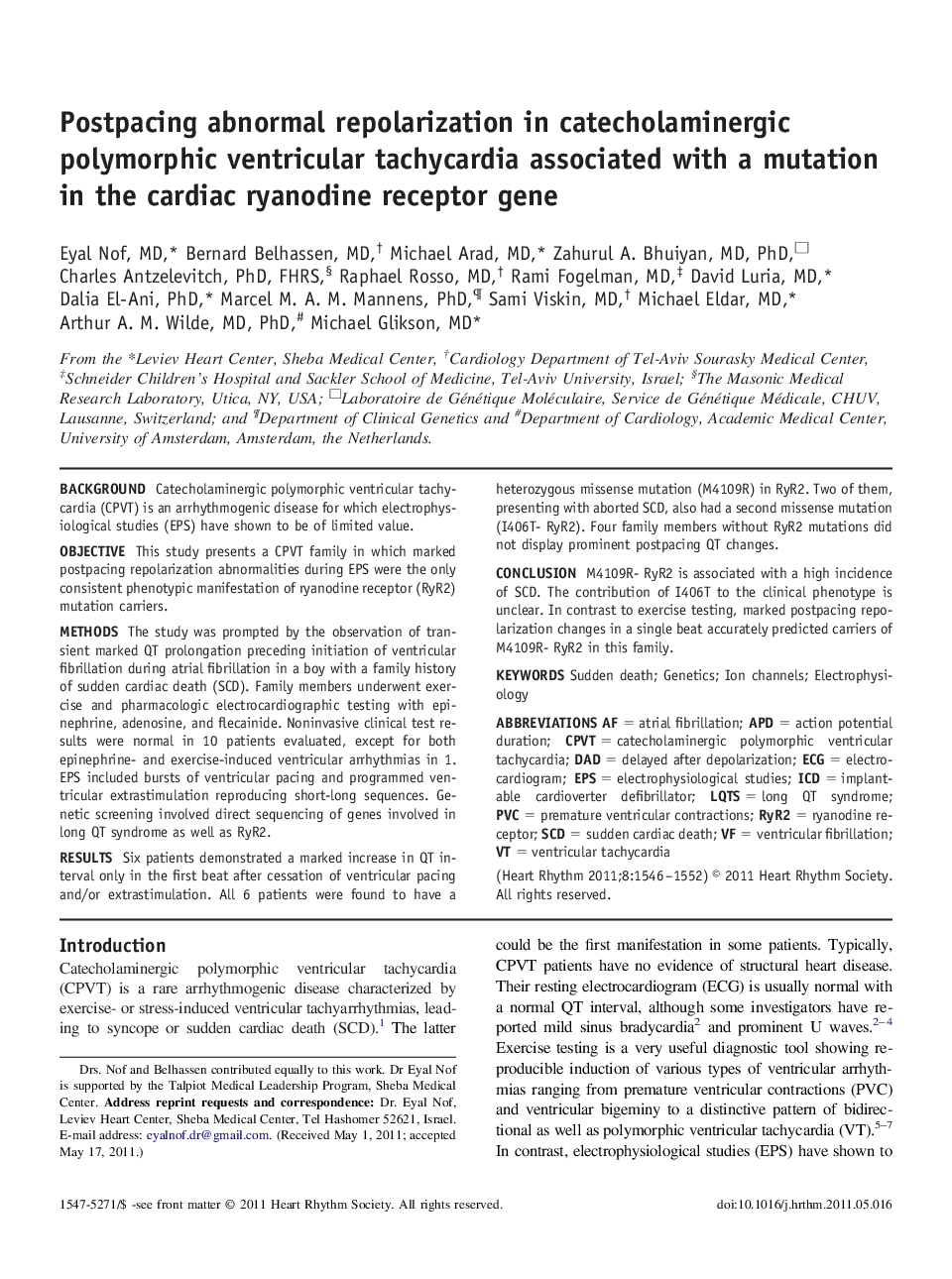| Article ID | Journal | Published Year | Pages | File Type |
|---|---|---|---|---|
| 2923674 | Heart Rhythm | 2011 | 7 Pages |
BackgroundCatecholaminergic polymorphic ventricular tachycardia (CPVT) is an arrhythmogenic disease for which electrophysiological studies (EPS) have shown to be of limited value.ObjectiveThis study presents a CPVT family in which marked postpacing repolarization abnormalities during EPS were the only consistent phenotypic manifestation of ryanodine receptor (RyR2) mutation carriers.MethodsThe study was prompted by the observation of transient marked QT prolongation preceding initiation of ventricular fibrillation during atrial fibrillation in a boy with a family history of sudden cardiac death (SCD). Family members underwent exercise and pharmacologic electrocardiographic testing with epinephrine, adenosine, and flecainide. Noninvasive clinical test results were normal in 10 patients evaluated, except for both epinephrine- and exercise-induced ventricular arrhythmias in 1. EPS included bursts of ventricular pacing and programmed ventricular extrastimulation reproducing short-long sequences. Genetic screening involved direct sequencing of genes involved in long QT syndrome as well as RyR2.ResultsSix patients demonstrated a marked increase in QT interval only in the first beat after cessation of ventricular pacing and/or extrastimulation. All 6 patients were found to have a heterozygous missense mutation (M4109R) in RyR2. Two of them, presenting with aborted SCD, also had a second missense mutation (I406T- RyR2). Four family members without RyR2 mutations did not display prominent postpacing QT changes.ConclusionM4109R- RyR2 is associated with a high incidence of SCD. The contribution of I406T to the clinical phenotype is unclear. In contrast to exercise testing, marked postpacing repolarization changes in a single beat accurately predicted carriers of M4109R- RyR2 in this family.
